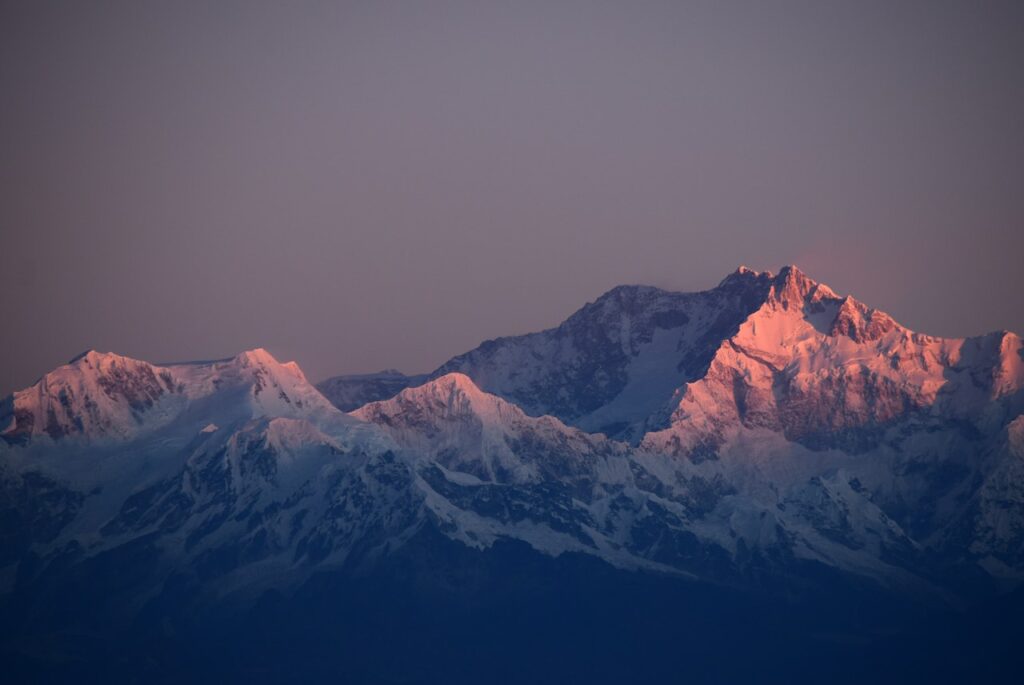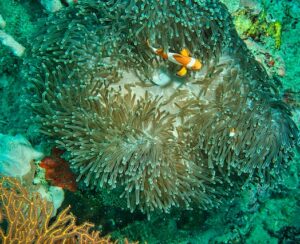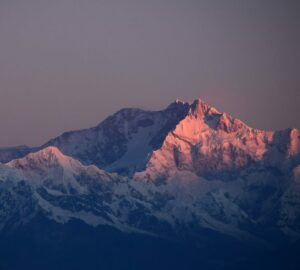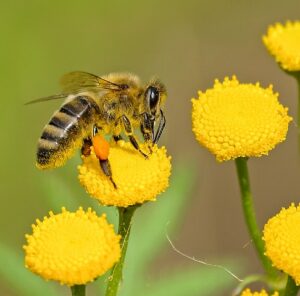

When natural systems become unstable
Climate Tipping Points (CTPs) are crucial natural systems that exert a global impact on other interconnected systems. A CTP acts like a chain reaction, triggering a cascade of events that disrupt the balance of nature across the entire planet.
Typically, natural systems function to uphold and restore a healthy environment. However, when the threat surpasses a specific threshold, these tipping points can set off a chain of events that render other natural systems uncontrollable. This tipping point is reached when natural systems become unstable and have adverse effects on the global environment.
A helpful analogy for understanding CTPs is to think of the body’s immune system. Similar to our immune system, CTPs require time to activate and respond. Yet, just like an imbalanced immune system can endanger our own health, these tipping points can lead to severe outcomes. These include dangerously high temperatures, allergic reactions, or even autoimmune diseases.
Diversity of natural systems
Natural systems encompass a diverse array of interconnected elements in the natural world. This term encompasses everything in nature that forms self-sustaining, thriving, and harmonious structures, fostering coexistence and mutual support among different components.
ECO SYSTEMS
An ecosystem is a dynamic community comprising a diverse array of species coexisting in a shared habitat. These species often rely on each other in order to ensure their individual and collective survival. Beyond animals, an ecosystem encompasses various other components such as bacteria, plants, soil, temperature, or weather.

ABIOTIC SYSTEMS
Inhabitants are provided with their environment by non-living elements. Abiotic systems play a crucial role in maintaining ecosystem stability and influencing their formation. For instance, in marine ecosystems, they determine factors such as salinity levels and temperatures. The iconic ice-covered habitat of the polar bear is a result of the abiotic conditions in which it resides. Likewise, rainforests owe their existence to the presence of consistent rainfall.

KEYSTONE SPECIES
Organisms or animals that actively maintain their ecosystem and exert a significant influence on its definition are known as keystone species. These species play a pivotal role, and their absence could lead to the collapse of the entire ecosystem. For example, a sea star contributes to the health of seaweed populations and the interconnected communities that rely on them for sustenance. Similarly, bees play a crucial role in the reproduction of flowers by transferring pollen from one flower to another, thus contributing to the production of seeds and fruits.

BIODIVERSITY
Biodiversity refers to the variety of distinct species present within a particular area, whether it encompasses a single ecosystem or multiple interconnected ones. These species encompass a wide range, including plants, microorganisms, fungi, animals, and humans. Certain regions exhibit minimal biodiversity, such as arid deserts with harsh conditions, while others teem with life, as seen in vibrant environments like coral reefs or rainforests.

What are the climate tipping points?
Experts are still discussing how many critical points there are that, if disturbed, could lead to big changes in the climate—some say up to 16. Right now, scientists officially agree on 11 of these points, known as climate tipping points (CTP).
1) Greenland Ice sheets
2) Antarctica Ice sheets
An ice sheet, also known as a continental glacier, forms when a glacier expands to cover a vast area, typically exceeding 50,000 square kilometers. Currently, there are ice sheets in two main locations. Antarctica‘s ice sheet spans approximately 14 million square kilometers, while Greenland’s ice sheet covers around 1.7 million square kilometers. Collectively, these ice sheets contain about 99% of Earth’s freshwater.
Due to global warming, the warming of the oceans is causing the bottom of these ice sheets to melt at a faster rate than the top layer. Additionally, the upper layer of the ice sheets is also melting. While ice sheets respond to temperature changes gradually, we are observing these effects in the present day. From 2021 to 2022, the average annual ice loss was 146 ± 64 Gigatonnes.
The peril of losing these continental glaciers lies in the rise of sea levels and a potential reduction in ocean salinity due to the influx of freshwater. This presents a real and imminent danger to marine life and coastal communities around the world. The ocean has risen by 0.4 millimeters annually due to melting ice sheets.
3) North Atlantic Current (NAC)
4) Gulf Stream
The Atlantic Ocean has currents, like ocean rivers, that move water around (North Atlantic Circulation). One important current is the North Atlantic Current, which carries warm water from the Gulf of Mexico to Europe’s coast. Another big current is the Atlantic Meridional Overturning Circulation (AMOC). It moves warm water up north and colder water down south. This helps regulate Earth’s temperature and climate. The Gulf Stream is a powerful ocean current within the Atlantic Ocean. It flows from the Gulf of Mexico up the East Coast of the United States and then crosses the Atlantic toward Europe. This warm current significantly influences both regional climates and global weather patterns.
Global warming is causing changes in these ocean currents. The warming waters are not only melting surface ice but also affecting the currents beneath. This has consequences for sea levels and disrupts the ocean’s salt balance. These shifts in ocean currents are closely linked to global weather patterns. The complex interaction between these currents and weather systems can lead to unpredictable and extreme conditions, influencing weather both along coastlines and inland.
5) Amazon rainforest
6) Boreal forest
The Amazon Rainforest, found in South America, is a vast incredible diverse ecosystem known as the “Lungs of the Earth.” It’s home to a staggering variety of plants, animals, and indigenous peoples. The Amazon Rainforest helps regulate the planet’s climate by absorbing carbon dioxide and producing oxygen through a process called photosynthesis.
The Boreal Forest, also known as the taiga, spans the northern regions of the globe, encircling the Earth just below the Arctic Circle. This expansive forest is characterized by its dense stands of evergreen trees like spruce, fir, and pine. It’s also home to various wildlife species adapted to cold climates, such as moose, wolves, and bears.
Deforestation, the widespread clearing of forests for human activities like agriculture, logging, and urban expansion, poses a grave threat to our planet. When forests like the Amazon and Boreal are destroyed, they release the stored carbon back into the atmosphere, contributing to global warming. Moreover, deforestation disrupts the delicate balance of ecosystems, causing loss of biodiversity, soil degradation, and changes in local and global weather patterns. Protecting forests is vital to maintaining Earth’s climate stability and preserving the many services they provide to us and the environment.
7) Permafrost: Siberia, Alaska, N- Canada, Tibetan plateau
Permafrost in Siberia: Siberia, a vast region in Russia, harbors extensive permafrost – frozen ground that lasts year-round. This frozen soil plays a critical role in shaping local ecosystems and even houses ancient plant and animal remains.
Permafrost in Alaska and Northern Canada: Alaska and Northern Canada also host significant permafrost areas. The frozen ground influences the landscapes and supports unique plant and animal species adapted to these chilly environments.
Permafrost on the Tibetan Plateau: Even on the high Tibetan Plateau, permafrost can be found. The frozen ground shapes the unique ecosystem of this vast plateau and plays a role in regulating local water resources.
Melting permafrost poses a significant climate challenge. As it thaws due to global warming, it releases greenhouse gases like carbon dioxide and methane into the atmosphere. This further accelerates global warming and creates a dangerous feedback loop, potentially intensifying climate change effects worldwide.
8) Mountain glaciers
Mountain glaciers are large masses of ice that accumulate and flow downhill within mountainous regions. These glaciers form through the accumulation and compaction of snow over many years. As the weight of the accumulating snow presses down, it transforms into ice, which then flows under its own weight, shaping valleys and landscapes as it moves.
These glaciers act as reservoirs of freshwater, providing essential water sources to communities downstream. As they melt, they contribute to rising sea levels and change the timing and availability of water resources for drinking, irrigation, and hydropower. Additionally, their reflective surfaces, known as albedo, play a role in cooling the planet by reflecting sunlight back into space. As glaciers shrink, darker surfaces like rock and soil are exposed, absorbing more heat and potentially exacerbating global warming. The loss of mountain glaciers can trigger a range of ecological, social, and economic impacts, highlighting the intricate connections between Earth’s climate and its various systems.
9) Arctic sea ice
Arctic sea ice is a layer of frozen seawater (salty) that forms and spreads across the Arctic Ocean and its surrounding seas. It is a vital part of the polar ecosystem and plays a critical role in regulating Earth’s climate by reflecting sunlight and helping to maintain cooler temperatures.
The Arctic sea ice is sensitive to warming temperatures, and as the Earth heats up due to climate change, the ice is melting at an alarming rate. This has serious consequences for both the local environment and the global climate. As the ice melts, the dark ocean waters are exposed, absorbing more heat and accelerating warming. This creates a feedback loop where less ice leads to more warming, which in turn melts more ice. The loss of Arctic sea ice affects marine life, the livelihoods of indigenous communities, and also contributes to rising sea levels globally. It underscores how changes in one part of the world can have far-reaching effects on the entire planet’s climate system.
10) Coral reefs
Coral reefs are vital hubs of marine life, serving as crucial reproduction centers and linking ecosystems together. These intricate structures, built by tiny coral creatures, offer refuge and nourishment to countless fish and other underwater organisms. These vibrant, underwater landscapes are rich in colors and life.
Despite their importance, coral reefs are delicate and vulnerable to warmer waters and pollution. The rising sea temperatures due to climate change trigger coral bleaching, causing the corals to lose their color and vitality. This distresses marine habitats and disrupts the fish populations that depend on these reefs. The resulting impact extends to people who rely on fishing for their livelihoods. The decline of coral reefs affects not only marine ecosystems but also the economic well-being of those connected to them, highlighting the necessity of safeguarding these ecosystems for current and future generations.
11) El Niño–Southern Oscillation
El Niño–Southern Oscillation (ENSO) is a complex climate pattern that involves the interaction between the ocean and the atmosphere in the tropical Pacific Ocean. It can have far-reaching effects on weather patterns around the world. El Niño is characterized by warmer-than-average sea surface temperatures in the central and eastern Pacific, while La Niña is associated with cooler-than-average sea surface temperatures in the same region. These phases have significant impacts on rainfall, temperature, and other climate variables in various regions.
ENSO‘s extreme phases, El Niño and La Niña, have the potential to act as climate tipping points. During El Niño, disrupted weather patterns can lead to droughts, heatwaves, and wildfires in some regions, while causing heavy rains and flooding in others. Conversely, La Niña can trigger opposite effects, including increased rainfall and colder temperatures in some areas. These shifts can disrupt ecosystems, damage crops, threaten water availability, and increase the risk of natural disasters. As climate change interacts with ENSO, the intensity and frequency of these extreme events may change, heightening the need for preparedness and adaptive strategies to mitigate their impacts on vulnerable communities and economies.
5 groups of think tank climate
While all 11 official climate tipping points are featured on this website, we’ve restructured them to enhance understanding. For instance, we’ve combined the official climate tipping points of Antarctica, rainforests, and boreal forests under the category of ‘Habitat change.’ We have added Wild Life to this discussion in order to paint a more accurate picture. Likewise, we’ve grouped all the climate tipping points related to ‘ice melting‘—mountain glaciers, ice sheets, permafrost, and sea ice —into a single section. Additionally, we’ve incorporated the El Niño–Southern Oscillation and the North Atlantic Current into a category titled ‘Weather change‘.‘ This reorganization aims to provide a more comprehensive perspective, without implying that all these elements are universally recognized as climate tipping points.
In addition to the official climate tipping point of Coral Reefs, our discussion extends to encompass plankton and starfish. Finally, we delve into the phenomenon of ‘ocean warming‘, addressing it through distinct chapters focusing on sea surface warming, blue-green algae, the formation of acidic waters, and the influence of water vapor on global warming and the ozone layer.
Think Tank Climate aims to explore climate tipping points in collaboration with the public. As we learn and progress, our initial design of climate tipping points may evolve to reflect our growing understanding.

Ice Melting
Sea ice, glaciers, icebergs, ice shelves and ice sheets. Antarctica, Arctic, Greenland and Glaciers melting rate and sea level rise. Permafrost and consequences of melting

Habitat Change
Trends of habitat change, influence on Wild life, Tundra and Boreal Forest, Temperate deciduous forests and Rainforests like Amazon, Congo, Borneo and Sumatra, Grasslands and hot and cold desserts

Weather Change
Weakening of global currents, Cold Blob, Wind: Trade Winds, ITCZ, Jet Streams, El Niño-Southern Oscillation (ENSO) Ocean: opwelling, Gulf Stream, ACC, Ocean Conveyor Belt, AMOC

Ocean Warming
Ocean acidification, Nutrient pollution, Hypoxia, Dissolved Organic Carbon (DOC), 90% of marine life is at the Sea Surface, blue-green algae or Cyanobacteria, water vapor GHG and ODS

Marine Species
Coral reefs, Stony corals require carbon and calcium, Coral bleaching, zooxanthellae Phytoplankton, photosynthesis, plankton blooms, Starfish
New group?
Have ideas? Help us improve! What climate tipping points should we cover?
Potential danger
- Unpredictable reactions of the Earth system
- Extreme weather events
- Droughts, floods, or hurricanes
- Seasons that are unpredictable
- Extinction / decline of plants
- Extinction / decline of animals
- Extinction / decline of organism
- Mass migration of people
- Migration of animals and organism
- Less clean water
- Wors weather conditions for agriculture
- Hunger and thirst
- Plagues of insects
- Pandemics
- Extreme loss of human life
- Sea level rise
Solutions
Raising the importance of Climate Tipping Points on the agenda of policymakers is crucial. Ignoring this threat is a violation of human rights. Extensive research has been conducted, providing a good understanding of key species and systems. The solutions largely involve logical thinking and empathy, simply behaving as human beings.
This means that leaders need to shift their focus away from prioritizing the flow and growth of money. Money is just a tool, and the primary goal of any leader should be to ensure the well-being and quality of life of the people. Once leaders grasp this priority, they have a responsibility to enact laws that prevent business owners from harming the environment and society.
Sources and credits
Help us improve
What Should We Investigate Next?
Do you know about a climate tipping point that is not on our website?



